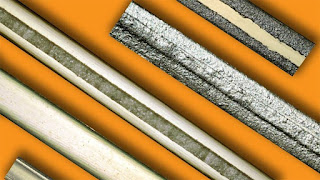Here’s the bad news about Black Friday laptop deals this year: the new MacBook Pro isn’t on sale (surprise!). Sorry. However, I do have some good news. There are pretty decent markdowns on the Surface Book, as well as on the reliable Dell XPS 13. Yay! And Apple is offering gift cards up to $150 with the purchase of select laptops. We compiled some of the biggest Black Friday deals here for you to check out. Maybe this is the year to treat yourself to a new laptop.
The best laptop to buy on Black Friday
Costco’s deal on the Dell XPS 13 is our pick for the best laptop deal. The Verge’s own Tom Warren called it the “best Windows laptop,” and while it’s still expensive at $1,299, that $300 discount helps. We can’t complain about saving money.
Our runner-up is the Surface Pro 4 because it’s $500 off, which is just an insanely good deal. That said, it’s an older device so not top of the line.
Apple
Online or in Apple stores on November 25th
$150 gift cards when buying a MacBook (from $1,299), MacBook Pro 13-inch or 15-inch (from $1,299; no late-2016 models are included so that means no TouchBar), MacBook Air (from $999), iMac (from $1,099), or Mac Pro ($2,999)
Gift cards up to $100 when buying an iPad Pro (from $599), iPad Air 2 (from $399), or iPad mini 4 (from $399)
Best Buy
Online from November 24th through November 26th, with physical store doors opening on Thanksgiving day at 5PM
Microsoft Surface Pro 4 (128GB, Intel Core m3) with Type Cover for $599.99 (usually $999.99)
Lenovo Yoga 900 (Intel Core i7, 8GB RAM, 256GB SSD) for $699.99 (usually $1,199.99)
HP Envy x360 (Intel Core i7, 16GB RAM, 1TB HDD) for $699.99 (usually $899.99)
Microsoft Surface Books for up to $400 off
ASUS Q534UX (4K display, Intel Core i7, 16GB RAM, GTX 950M, 2.5TB HDD) for $1,099 (usually $1,599.99)
HP Spectre x360 (Intel Core i7, 16GB RAM, 512GB SSD) for $999.99 (usually $1,499.99)
Staples
Thursday online and Friday in-store or pickup
Microsoft Surface Pro 4 (Intel Core i5 processor, 4GB RAM, 128GB SSD) for $799.99 (usually $999)
HP Pavilion 15 (Intel Core i7 processor, 12GB RAM, 1TB HDD) for $499 (usually $779.99)
HP Pavilion 14 (Intel Core i5 Processor, 12 GB RAM, 1 TB for $389.99 (usually $639.99)
Lenovo Flex 4 (Intel Core i5 processor, 8GB RAM, 256GB SSD) for $499.99 (usually $749.99)
Costco
Starting Friday at 9AM through Monday, November 28th
Dell XPS 13 (Intel Core i7, 16GB RAM, and 512GB SSD with one year of Office 365) for $300 off (usually $1,599)
Microsoft Surface Pro 4 bundle with Surface Pen and Type Cover for $250 off
Walmart
Black Friday only
Samsung Chromebook 3 for $119 (usually $149.99)
Microsoft
Available online in Microsoft’s online store at 12:01AM ET on Black Friday
Surface Pro 4 (Intel Core i5, 256GB SSD, included Type Cover) for $999 (usually $1,428)
Surface Pro 4 (Intel Core i5, 128GB SSD) for $799 (usually $999)
Surface Book (Intel Core i5, 256GB SSD) for $1,499 (usually $1,899)
Dell Inspiron 15 (Intel Core i5, 8GB RAM, 1TB HDD) for $399 (usually $749)
Alienware 15 Touch (Intel Core i7, 16GB RAM, GeForce GTX 970M) for $1,497 (usually $2,499)
HP
Available from Black Friday through Monday November 28th
HP Spectre x360 13t OLED touch for $999.99 (usually $1,499.99)
HP Spectre x360 13t touch for $949.99 (usually $1,049.99)
HP Spectre 13t for $969.99 (usually $1,169.99)
HP Pavilion Laptop 15z touch optional for $319.99 (usually $579.99)
HP ENVY 15t Touch for $649.99 (usually $949.99)
Dell
Available now
Inspiron 11 3000 for $329.99 (usually $369.99)
Inspiron 13 5000 for $479.99 (usually $549.99)
Inspiron 17 5000 for $549.99 (usually $649.99)
Inspiron 15 5000 for $849.99 (usually $899.99)
Inspiron 15 7000 for $899.99 (usually $999.99)
Newegg
Available now through Saturday November 26th
Lenovo ThinkPad Yoga 12 (Intel Core i5, 4GB RAM, 16GB SSD) for $499.99 (usually $599.99)
Asus K501UW-NB72 (Intel Core i7, 8GB RAM, 128GB SSD, GeForce GTX 960M) for $719 (usually $999)
Gigabyte P55Wv6-NE2 (Intel Core i7, 16GB RAM, 128BG SSD, NVIDIA GeForce GTX 1060) for $1,149 (usually $1,499)
MSI GL62 6QF-627 (Intel Core i7, 8GB RAM, 1TB HDD, NVIDIA GeForce GTX 960M) for $799 (usually $999)
MSI GL62 6QF-1445 (Intel Core i7, 12GB RAM, 128GB SSD, NVIDIA GeForce GTX 960M) for $849 (usually $999)
HP 250 G5 (Intel Core i5, 8GB RAM, 256GB SSD) for $419.99 (usually $599.99)
Acer Aspire E 15 (Intel Core i5, 8GB RAM, 1TB HDD) for $419.99 (usually $599.99)
Acer Aspire E5-575G-728Q (Intel Core i7, 8GB RAM, 1TB HDD) for $669.99 (usually $699.99)
(Affiliate links are automatically generated by our partner, Skimlinks. For more information, see our ethics policy.)




































